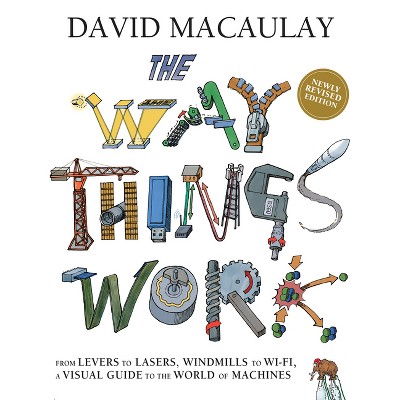Sponsored

Nuclear Power Goes On-Line - (Contributions in Economics and Economic History) by William Beaver & Peter Schrott (Hardcover)
In Stock
Sponsored
About this item
Highlights
- On May 26, 1958, the Shippingport, Pennsylvania, nuclear power station ushered in the age of the peaceful atom when it became the first nuclear power plant to go on-line.
- About the Author: WILLIAM BEAVER is an Assistant Professor at Robert Morris College in Pennsylvania, where he specializes in technology and organizational behavior.
- 208 Pages
- Technology, Power Resources
- Series Name: Contributions in Economics and Economic History
Description
About the Book
On May 26, 1958, the Shippingport, Pennsylvania, nuclear power station ushered in the age of the peaceful atom when it became the first nuclear power plant to go on-line. Throughout its more than three decades of operation, Shippingport encountered many of the crucial problems and issues that still confront nuclear power: policy formation, the role of government in technological innovation, technological management, environmental issues, breeder reactors, and the decommissioning of a nuclear plant. In an objective and nonprejudiced way, this book provides an accurate account of the important events in Shippingport's history and the role that they played in the future course of nuclear power.
Unlike other general treatments of nuclear power, this volume presents a specific case history of one plant, with the major issues that influenced nuclear power analyzed in the context of both Shippingport and the nuclear industry as a whole. It draws on technical reports filed with the government, Congressional testimony by project head Hyman Rickover, interviews with participants in the Shippingport project, and relevant secondary sources to detail the history of one of the few successful government attempts to innovate energy technologies following World War II. The chapters trace the story of Shippingport from its beginnings, through construction, training, and management, to its final decommissioning. Other issues and influences, such as the AEC's reactor development policy and the plant's role in the adoption of the light water reactor, are also addressed. The book concludes with a general bibliography. This important new work will be a valuable resource for courses in the history of technology, public policy, technology and society, and technological management. It will also be an important addition to college, university, and public libraries.
Book Synopsis
On May 26, 1958, the Shippingport, Pennsylvania, nuclear power station ushered in the age of the peaceful atom when it became the first nuclear power plant to go on-line. Throughout its more than three decades of operation, Shippingport encountered many of the crucial problems and issues that still confront nuclear power: policy formation, the role of government in technological innovation, technological management, environmental issues, breeder reactors, and the decommissioning of a nuclear plant. In an objective and nonprejudiced way, this book provides an accurate account of the important events in Shippingport's history and the role that they played in the future course of nuclear power.
Unlike other general treatments of nuclear power, this volume presents a specific case history of one plant, with the major issues that influenced nuclear power analyzed in the context of both Shippingport and the nuclear industry as a whole. It draws on technical reports filed with the government, Congressional testimony by project head Hyman Rickover, interviews with participants in the Shippingport project, and relevant secondary sources to detail the history of one of the few successful government attempts to innovate energy technologies following World War II. The chapters trace the story of Shippingport from its beginnings, through construction, training, and management, to its final decommissioning. Other issues and influences, such as the AEC's reactor development policy and the plant's role in the adoption of the light water reactor, are also addressed. The book concludes with a general bibliography. This important new work will be a valuable resource for courses in the history of technology, public policy, technology and society, and technological management. It will also be an important addition to college, university, and public libraries.Review Quotes
?The Shippingport, Pa., nuclear power station was officially the first plant to go on-line on May 26, 1958; it was also the first plant to be formally "decommissioned." William Beaver summarizes Shippingport's history from its beginnings as part of Eisenhower's plan "to put the atom to work for the good of mankind, not its destruction," through its construction, operation, and ultimate closing. Because of its major role in the subsequent course of nuclear power and light water reactor development in the United States and its essentially complete history, Shippingport's story is one worth both telling and reading.?-Science, Technology and Society
"The Shippingport, Pa., nuclear power station was officially the first plant to go on-line on May 26, 1958; it was also the first plant to be formally "decommissioned." William Beaver summarizes Shippingport's history from its beginnings as part of Eisenhower's plan "to put the atom to work for the good of mankind, not its destruction," through its construction, operation, and ultimate closing. Because of its major role in the subsequent course of nuclear power and light water reactor development in the United States and its essentially complete history, Shippingport's story is one worth both telling and reading."-Science, Technology and Society
About the Author
WILLIAM BEAVER is an Assistant Professor at Robert Morris College in Pennsylvania, where he specializes in technology and organizational behavior. His articles have appeared in a number of journals, including The Historian and History and Technology.Shipping details
Return details
Frequently bought together

Trending Computers & Technology Books
















